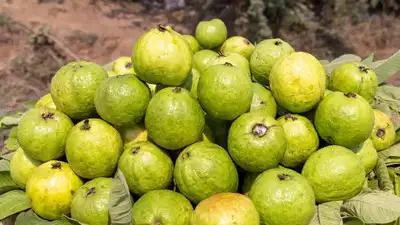ARTICLE AD BOX

Guavas are tropical delights celebrated for their sweet flavour, refreshing aroma, and numerous health benefits. However, not every guava you pick up at the market will be perfectly ripe or flavourful.
Some may be too hard, underripe, or overripe, losing their natural sweetness. Learning how to identify signs of ripeness ensures you always choose the best. Factors such as colour, aroma, texture, and firmness all reveal whether a guava is ready to eat. With a little knowledge and careful selection, you can consistently bring home juicy, sweet guavas that not only taste wonderful but also support your health and wellbeing.
How to spot sweet and ripe guavas easily
What makes a guava sweet
The sweetness of a guava is determined by several factors. As the fruit ripens, its natural starches break down and convert into sugars, giving it that delightful flavour. Some varieties naturally produce more sweetness than others, especially those with pink or red flesh. Climate and growing conditions also play a role; guavas that mature in warm, sunny environments often develop richer flavours compared to those grown in cooler or overly shaded conditions.
Appearance: Colour, shape and skin
The first sign of a sweet guava lies in its colour and overall appearance. Unripe guavas are usually dark green, but as they ripen, their skin changes to a lighter green with a yellowish tint. This gentle yellow hue is a good indicator that the fruit is ready to eat. Overly yellow guavas, however, may be overripe and less pleasant in flavour.The skin should be smooth and free from blemishes. Avoid guavas with black spots, bruises, or cuts, as these can indicate overripeness or insect damage.
A well-shaped guava is also a sign of proper development. Uniformity in shape often suggests that the fruit has grown under healthy conditions, while misshapen fruits may have developed irregularly and might not be as sweet.
Aroma: Smell as a ripeness indicator
One of the simplest ways to identify a sweet guava is by using your sense of smell. A ripe guava releases a distinctive, fruity fragrance that is both floral and inviting. If you cannot detect any aroma, the fruit may still be unripe.
On the other hand, a sour or fermented smell suggests overripeness. Always trust your nose; it rarely fails when it comes to guavas.
Texture and firmness: How to feel the fruit
Texture is another reliable clue. When you press a guava gently, it should feel firm yet yield slightly under your fingers. A guava that is rock hard is unripe, while one that feels too soft or mushy has passed its prime. The ideal guava strikes a perfect balance, being firm enough to hold its shape but soft enough to promise sweetness inside.
Varieties of guavas: White and pink guavas
Different guava varieties offer different levels of sweetness and texture. White-fleshed guavas are usually crisp with a mild flavour, while pink or red-fleshed varieties tend to be sweeter and more aromatic. Some guavas retain their green skin even when ripe, while others develop yellow tones. Knowing which varieties are common in your region helps you judge ripeness more accurately.
Health benefits: Why guava is good for you
Beyond its irresistible flavour, guava is one of the most nutrient-dense fruits available.
It is incredibly rich in vitamin C, often containing more than oranges. Guavas are also a great source of dietary fibre, which aids digestion and helps maintain stable blood sugar levels. The fruit is packed with antioxidants like lycopene and flavonoids, which protect the body from oxidative stress and support overall wellness.
Potassium in guava helps regulate blood pressure and supports heart health, while the low-calorie content makes it a perfect choice for those managing their weight.
Common mistakes when picking guava
Many people make the mistake of choosing guavas that are too green, thinking they will ripen quickly at home. While this can work, it often results in fruit that lacks sweetness. Others go for overly soft guavas, only to find that they are mushy and beginning to ferment. Another common error is focusing only on size. Bigger guavas are not always better; sometimes, smaller fruits are more concentrated in flavour.Also read | Pink guava vs. white guava: Which is better for blood sugar, weight management, overall health



.png)
.png)
.png)
















 1 hour ago
4
1 hour ago
4









 English (US) ·
English (US) ·